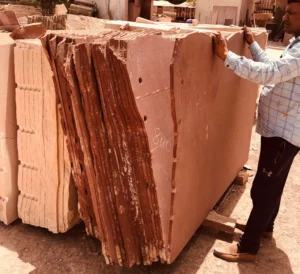Jodhpur Stone: Uses, Benefits, and Importance
Jodhpur stone, named after the historic city of Jodhpur in Rajasthan, India, is a widely acclaimed building material that has been utilized for centuries in construction, decoration, and various architectural ventures. Known for its distinct characteristics, Jodhpur stone is not only revered in India but also has garnered attention on the international stage.
Origin and Characteristics
The rich and golden-hued Jodhpur stone is extracted mainly from the quarries around the city of Jodhpur. This sedimentary rock is chiefly comprised of calcium carbonate, which lends it its hard-wearing properties.
The stone exhibits certain distinguishable characteristics:
Color Variability: Primarily available in a golden hue, its range extends to brown, red, and even green shades depending on the mineral composition.
Durability: Jodhpur stone is known for its strength and resistance to wear and tear, making it suitable for both interiors and exteriors.
Natural Texture: It has a unique natural texture that can be both rough and fine, depending on the intended use and finishing.
Thermal Insulation: A notable characteristic of Jodhpur stone is its ability to provide thermal insulation, which is particularly beneficial in the hot and arid climate of Rajasthan.
Uses of Jodhpur Stone
The multifaceted uses of Jodhpur stone are primarily grounded in its innate properties. Some of the predominant uses include:
Building Construction: Its resilience and aesthetic appeal make it a prime choice for construction purposes. From houses to palaces, temples to government buildings, this stone has been an integral part of Rajasthan’s architectural heritage.
Flooring: Due to its hard nature and resistance to scratches, Jodhpur stone is a popular choice for flooring. Its variety of colors can be matched with different architectural styles.
Wall Cladding: The stone’s natural texture and colors are ideal for exterior and interior wall claddings, providing both aesthetic and functional advantages.
Landscaping: In gardens, patios, and outdoor settings, Jodhpur stone is employed for pathways, fountains, and other design elements.
Ornamental Features: This includes carved statues, pillars, and decorative elements for both interiors and exteriors of buildings.
Countertops & Tabletops: The durability and resistance to stains make it an excellent choice for countertops in kitchens and tabletops.
Benefits of Jodhpur Stone
Longevity: Structures built with Jodhpur stone can withstand the test of time, offering a long lifespan.
Maintenance: Its natural resistance to moisture, mold, and other environmental factors means it requires minimal maintenance.
Eco-friendly: Mining and processing of Jodhpur stone have a lower carbon footprint compared to other building materials.
Affordability: Given its local origin and availability, it is often more economical compared to imported stones.
Versatility: With different finishes like polished, honed, flamed, or sandblasted, it offers a plethora of design options.
Conclusion
Jodhpur stone is a testament to the rich geological and architectural heritage of Rajasthan. Its manifold applications, from monumental palaces to modern homes, attest to its enduring charm and functionality. Embracing this indigenous resource is not only a nod to tradition but also a sustainable choice in the contemporary world. As architects and designers worldwide become more eco-conscious and rooted in regional authenticity, the use of materials like Jodhpur stone is only bound to grow.


